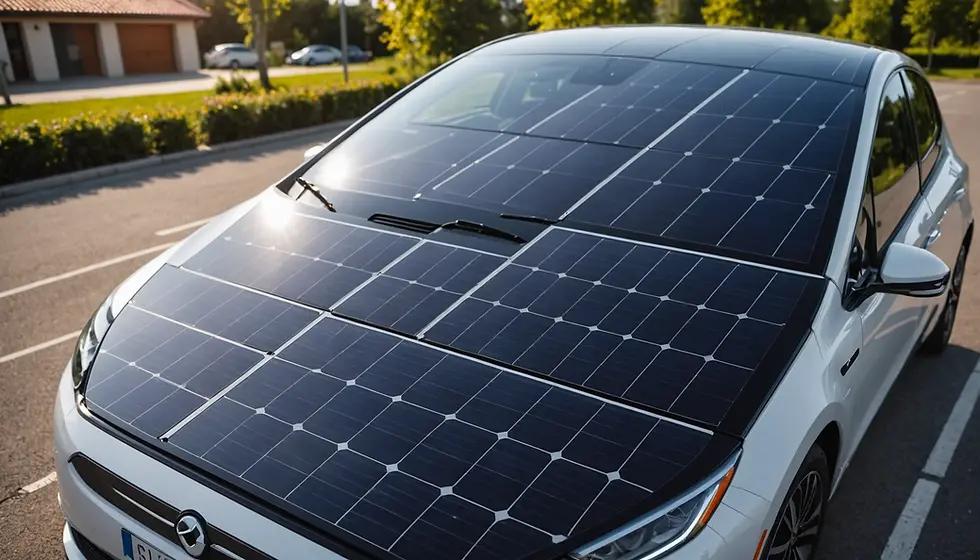Revolutionizing Transportation: The Unknown Potential of Self-Charging EVs
- Menno Drescher

- Jan 20
- 3 min read
The automotive industry is undergoing a groundbreaking transformation. Electric vehicles (EVs) are at the forefront, paving the way for a sustainable future. Among the most exciting developments are self-charging electric vehicles, which not only showcase technological innovation but also revolutionize how we think about mobility. In this article, we will explore the untapped potential of self-charging EVs and their crucial role in creating a greener planet.
Understanding Self-Charging Technology
Self-charging EVs utilize advanced energy-harnessing systems that allow them to generate power while on the road. This means the vehicle’s battery can remain charged without relying solely on traditional charging stations. Key features of this technology include regenerative braking and solar energy capture, which significantly enhance the vehicle's range and convenience.
For instance, regenerative braking can recover up to 70% of the energy lost during braking. When combined with solar panels integrated into the vehicle, self-charging EVs can tap into more than 20% of the sun's energy during daylight, allowing for extended use between standard charging sessions.

This innovative approach addresses range anxiety—a common issue for many potential EV buyers. By integrating renewable energy sources, self-charging EVs promise a more autonomous driving experience, enhancing user confidence in their capabilities.
The Environmental Benefits of Self-Charging EVs
A core value of the self-charging EV movement is its commitment to the environment. Traditional gas-powered cars contribute significantly to air pollution and greenhouse gas emissions, accounting for about 29% of U.S. emissions. In contrast, self-charging EVs offer the possibility of dramatically lowering these emissions.
Research indicates that regenerative braking alone can result in energy savings of 10-30% during city driving conditions. Moreover, the integration of solar panels can potentially provide up to 15 miles of range per day from sunlight alone, significantly reducing reliance on fossil fuels. This transition towards self-sustainable transportation not only decreases carbon footprints but also fosters an eco-conscious driving culture.

How Self-Charging EVs Transform Urban Mobility
Urban areas face multiple challenges, including traffic congestion and pollution. Self-charging EVs could be a vital solution for these problems. By providing a constant source of power, they can improve air quality and lower noise pollution in busy cities.
Moreover, the technology paves the way for smart city integration. Imagine self-charging EVs communicating with traffic management systems to optimize routes. This could lessen congestion by up to 20%, making urban transportation smoother and more efficient.
Additionally, self-charging EVs can act as energy storage units for smart grids, allowing owners to sell excess energy back to the grid. This not only incentivizes eco-friendly behavior but also adds a new revenue stream for EV owners.
The Technological Innovations Driving Self-Charging EVs
The growth of self-charging EVs is tied to various technological breakthroughs. Solid-state batteries, for example, offer increased efficiency and faster charging times, potentially reducing the average charging duration from 8 hours to under 30 minutes. This could revolutionize how we perceive and utilize EV technology.
Furthermore, advancements in solar capture efficiency enable EVs to produce more energy from sunlight than ever before. Continuous investment in research is shaping the future of self-charging vehicles, making them more appealing to a broader audience.

Overcoming Challenges and Future Outlook
Despite their promise, self-charging EVs face several challenges. One significant hurdle is the public's understanding of this innovative technology. Although enthusiasts recognize the advantages, comprehensive educational initiatives are necessary to foster mainstream acceptance.
Moreover, existing charging infrastructure mainly supports traditional methods; a shift is needed to fully embrace self-charging technology. This includes adapting current systems and investing in new solutions to realize the full potential of self-charging capabilities.
Fortunately, the future appears optimistic. Around the world, governments are prioritizing sustainable transportation options. Incentives, friendly policies, and subsidies for renewable energy are all contributing to a growing market for self-charging vehicles.
The Road Ahead
Self-charging electric vehicles represent a transformative milestone in our journey toward sustainable transportation. By harnessing advanced technologies and renewable energy sources, these vehicles not only provide an environmentally friendly alternative to traditional vehicles but also give users more control over their energy consumption.
As innovation continues, the untapped potential of self-charging EVs is poised to change urban transit, stimulate economic growth, and significantly benefit the environment. With ongoing investment and rising public interest, self-charging EVs are not merely a glimpse into the future of transportation—they are integral to crafting a more sustainable world.
So, the question remains: Are you prepared to join the transportation revolution?



Comments